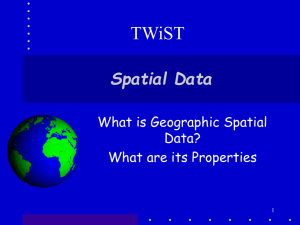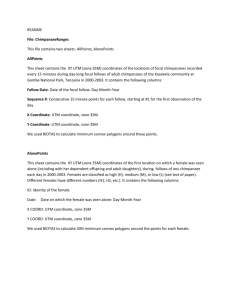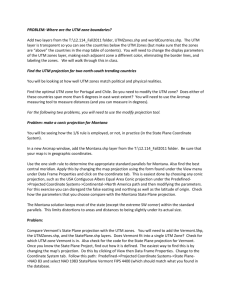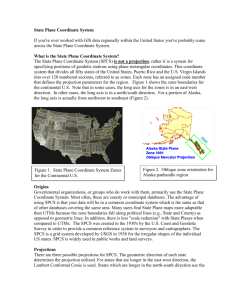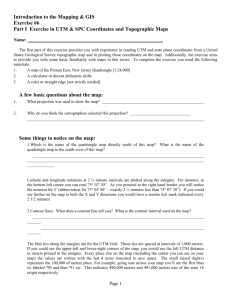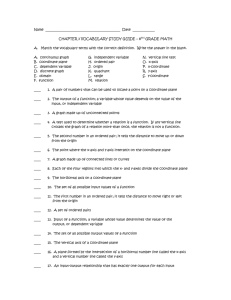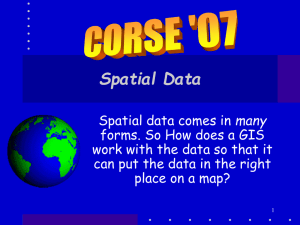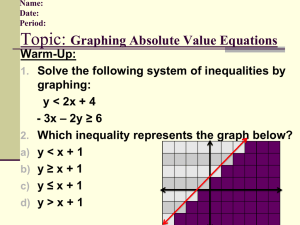Geographical Data Manual v1
advertisement
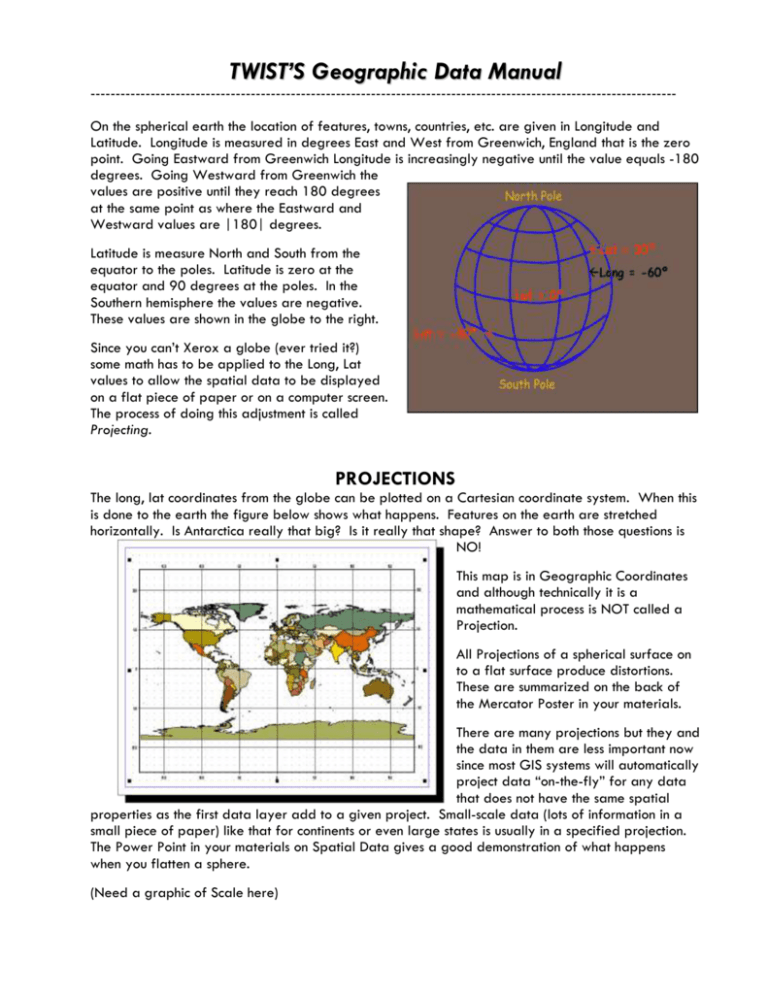
T WI S T’ S G eog ra ph i c D ata M anu al --------------------------------------------------------------------------------------------------------------------On the spherical earth the location of features, towns, countries, etc. are given in Longitude and Latitude. Longitude is measured in degrees East and West from Greenwich, England that is the zero point. Going Eastward from Greenwich Longitude is increasingly negative until the value equals -180 degrees. Going Westward from Greenwich the values are positive until they reach 180 degrees at the same point as where the Eastward and Westward values are |180| degrees. Latitude is measure North and South from the equator to the poles. Latitude is zero at the equator and 90 degrees at the poles. In the Southern hemisphere the values are negative. These values are shown in the globe to the right. Since you can’t Xerox a globe (ever tried it?) some math has to be applied to the Long, Lat values to allow the spatial data to be displayed on a flat piece of paper or on a computer screen. The process of doing this adjustment is called Projecting. PROJECTIONS The long, lat coordinates from the globe can be plotted on a Cartesian coordinate system. When this is done to the earth the figure below shows what happens. Features on the earth are stretched horizontally. Is Antarctica really that big? Is it really that shape? Answer to both those questions is NO! This map is in Geographic Coordinates and although technically it is a mathematical process is NOT called a Projection. All Projections of a spherical surface on to a flat surface produce distortions. These are summarized on the back of the Mercator Poster in your materials. There are many projections but they and the data in them are less important now since most GIS systems will automatically project data “on-the-fly” for any data that does not have the same spatial properties as the first data layer add to a given project. Small-scale data (lots of information in a small piece of paper) like that for continents or even large states is usually in a specified projection. The Power Point in your materials on Spatial Data gives a good demonstration of what happens when you flatten a sphere. (Need a graphic of Scale here) G eog ra phi c Dat a M anua l Copyright L. Herrington & A. Badruddin, Syracuse 2011 Coordinate Systems Local data, or what we call Large Scale data (sparse information in a large piece of Paper) will usually be in one of two Coordinate Systems. There are two of these: State Plane and UTM (Universal Transverse Mercator). UTM The UTM coordinate system is worldwide and the Zones in the coordinate system run from pole to pole. The figure to the right shows the zones for the US. The earth is divided into 60 Zones starting just West of Alaska’s West most point (180 degrees west) and continues until 180 degrees East is reached. Each zone is 6 degrees wide but there are exceptions to this in Northern Europe. Wikipedia is an excellent source of information on UTM. Notice that NY is mostly in Zone 18 and so this zone is used for most state wide work and work for smaller areas. The figure to the left, from the Power Point shows how coordinates are measured in UTM. The X coordinate is called an Eastings and the Y coordinate is called a Northing. The origin of the coordinate system is 4 million meters to the west of west boundary of the zone. This is done so that the Eastings are never negative. The figure shows the coordinates for Syracuse along with “projection” information as it is recorded for data in Zone 18. State Plane Every state in the US has a set (one or more) of local coordinate systems. The figure to the right shows the State Plane zones for all the states in the lower 48. You can see that NY has 4 separate Zones with slightly different coordinate systems. Texas has 5 zones. Each Zone has a projection (in NY most use the Transverse Mercator Projection (this is NOT the same as UTM.) Long Island, however, uses the Lambert Conformal Projection. The Zones in the state plane system do not Document1 2.13.11 Page 2 of 3 G eog ra phi c Dat a M anua l Copyright L. Herrington & A. Badruddin, Syracuse 2011 have mathematical origins (0,0 coordinates) of distance from Greenwich and distance from the equator. For that reason you cannot display or make maps using data from different zones – the data will NOT line up at the boundary of the zones. In NY most statewide maps in the State Plane coordinate system use only zone 18, the central zone. This causes some displacements of data for the west and east ends of the state. As with UTM the coordinates for State Plane data are called Northings and Eastings. You can usually tell if you have UTM or State Plane if you are in the Northern US because the for UTM, since the origin for Northings is the Equator, Northings are of the order of 5 million meters while for State Plane the Northings are usually the order of 100,000 meters or 300,000 feet. Spatial Data Kinds of Spatial Data Vector Raster Scale ???? Document1 2.13.11 Page 3 of 3

